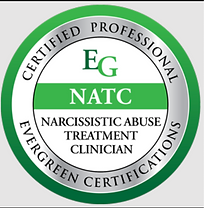
HOW CAN COGNITIVE BEHAVIOURAL THERAPY HELP DEPRESSION
One of the key types of psychotherapy is Cognitive behavioural therapy abbreviated as CBT. CBT focuses on modifying thought patterns, essentially changing an individual's behaviour and moods. This therapy model is built on the idea that negative feelings or actions result from ongoing distorted beliefs or thoughts and not entirely from past, unconscious forces.
CBT is a combination of behavioural and cognitive therapies. While cognitive therapy modifies moods and thoughts, behavioural therapy entirely focuses on actions and behaviours. The goal of any CBT therapist is to work with you in the identification of particular negative thought patterns and behavioural responses, especially towards demanding or stressful instances.
CBT treatment aims at creating balance and practical methods in responding to stressful situations. The end-goal in this responsive treatment is either aid in the minimization or elimination of the specific troubling behaviour or disorder.
The guiding principles in CBT come alive outside the therapist's office, a good example being online behavioural therapy. To manage anxiety or depressive symptoms, online behavioural therapy utilizes the principles of CBT.
The CBT model- how it works
In comparison to psychodynamic and psychoanalysis, CBT offers a short-term treatment approach. While other forms of therapy approaches might take years to achieve the desired goal, CBT only takes about between 10 to 20 sessions.
During the therapy sessions in CBT, the therapist works to identify the contributing factors in your current life situation leading to depression. This treatment approach is different from psychoanalysis which involves taking a journey backward through your life to establish the unconscious cause of your current issues.
CBT may involve a walk down your life memory lane, giving you the option of documenting your reaction to particular life events. The therapist will guide you in breaking down thought patterns and reactions into various categories of self-defeating thought which include the following;
· Eliminating the positive: involves barring positive life experiences by registering on your mind that they are not essential
· All-or-nothing thoughts; involves having a clear, uninterrupted view of the world and events
· Mental filter; dwelling on a particular selected negative information entirely as you assume or disregard the vision of reality
· Automatic negative reactions; includes the regular or habitual scolding self-thoughts
· Overgeneralization; coming to numerous conclusions regarding a particular situation
· Overestimation or underestimation of an event; involves making a fuss, magnifying the extent of a particular event or situation
· Personalization; having a personal touch on everything, feeling like you are being targeted
By using the journal, you can actively, together with your therapist, help reduce negative thought patterns and perceptions, substituting them with thoughts that are constructive and positive. Some of the techniques used to achieve positivity include;
· Being in charge of and gaining the ability to modify distorted thoughts and reactions
· Learning to make a precise judgment of external situations and reactions or emotional responses
· Gaining the ability to offer a balanced and accurate self-talk
· Learning to self-evaluate situations and offer an appropriate response
You can actively learn the coping methods with the help of your therapist or on your own. you can also practice the methods in actual life events when you face a challenging situation, and gain the experience in responding precisely to each challenge. Another vital approach is by use of online CBT which gives you the chance to practice your response to the various situation at your comfort.
What can CBT correct?
There are several conditions and disorders that CBT can successfully treat, both in children and adults. Some of the conditions and disorders are listed below;
Ø Attention deficit hyperactivity disorder
Ø Personality disorders
Ø Bipolar disorder
Ø Several forms of anxiety disorders
Ø Antisocial behaviours and disorders
Ø Several disorders including anorexia, bulimia and binge eating
Ø Schizophrenia
Ø Several types of phobias
Ø Social interaction disorders
Ø Substance abuse
Ø Sexual disorders
Ø Sleep disorders
CBT can be used in conjunction with other treatment and therapy methods in the management of depression and other conditions or disorders.
Associated risks in CBT
CBT has little known or documented ling-term associated risks. One of the notable challenges in CBT is the experience of reliving stressful and unpleasant events or situations that you'd otherwise love to avoid. The troubling and unpleasant past events offer the chance to practice altered responses to adverse or stressful experiences. Therapy is designed to help you learn how to respond to anxiety, stress, or depression effectively.
Experts opinions
Simon Rego, Psy.D. of Montefiore Medical Center based in New York while giving his opinion to Healthline said that there is sufficient evidence to show that cognitive-behavioural therapy is effective in the correction of certain disorders and conditions. The evidence in support of CBT is extensive, in comparison to the other forms of therapy following numerous evidenced-based studies carried out regarding CBT.
Raquel Soteldo RP(Q), MA, ABA, PMP, CCC



